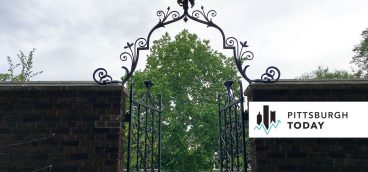Building a Stronger Region

Creating a diversity survey for the Pittsburgh region is a tricky business. First, in this day and age, how should we define diversity? There’s racial and ethnic diversity as well as diversity of religion and of sexual preference, which has grown from “LGBT” to “LGBTQIA” (you can look it up). Should women fall under the umbrella of diversity, though they comprise more than half the population? And what about veterans?
These were questions faced by a group of us representing Vibrant Pittsburgh, Pittsburgh Today, the Allegheny Conference on Community Development, Pitt’s University Center for Social & Urban Research, the Three Rivers Workforce Investment Board, and a consortium of HR professionals at the region’s largest employers among others. And as you can imagine, building consensus with such a group is its own challenge.
Our focus was pre-shaped by a report we released in the spring, examining racial and ethnic diversity in Pittsburgh’s workforce. Our findings (viewable at pittsburghtoday.org/workforcediversity.html) showed, among other things, that Greater Pittsburgh has the lowest workforce percentage of African Americans, Asians and Hispanics of all of our 15 benchmark regions. Our 11 percent compares with a benchmark average of 25 percent. So we’re continuing primarily with racial and ethnic diversity, and broadening it somewhat through demographic questions.
Why are we conducting this survey? Given that Pittsburgh is one of the country’s least racially diverse large metro areas and that the white population nationally is expected to decline in real numbers by 10 percent over the next 40 years, Pittsburgh will likely need to become more successful in attracting all kinds of people, including minorities, in order to sustain our local economy in the face of waves of baby boomer retirements.
So we’re seeking to learn about our residents’ experiences and attitudes regarding diversity, with a goal of “actionable” results. In other words, after we tabulate and disseminate the results, we want people and organizations to not only learn but also be able to craft and execute plans that ensure that people of diverse backgrounds find Pittsburgh to be a place where they want to come and stay.
The survey is broadly divided into two areas—workplace and community. The workplace questions focus on practices and policies workers experience, with an eye toward learning how employers can make the region more effective in attracting and retaining a diverse workforce.
Other questions seek to gauge personal feelings and actions. For instance:
“I am tired of hearing, reading, and/or learning about diversity.” Strongly agree, agree somewhat, disagree somewhat, or strongly disagree. And: “Over the last 12 months, how often have you invited someone of another racial or ethnic background to your home for a social gathering? Would you say: Just about every week, just about every a month, almost every month, several times, once, or never?”
The survey is anonymous and web-based and should take 10 minutes to complete. We hope business leaders will encourage employees to take the survey; we often hear their concerns about maintaining a strong and diverse workforce, and this is the perfect opportunity for leaders to learn what regional workers perceive, experience and value.
But more important, I hope everyone reading this who lives and works in the Pittsburgh region will complete the brief survey. If we’re going to fill the jobs of the future, we’ll need to succeed in attracting all kinds of people. It’s an issue that affects us all. Do we want to have a vibrant population that continues to thrive, or will we be complacent and witness a resumption of population decline that threatens the viability of organizations across the spectrum—from business to the arts?
You can take the anonymous survey at swpadiversity.com until mid-September, but I urge you to take it now before it gets lost in the pile of forgotten good intentions.
Likely, it will cause you, as it has me, to think about some things you haven’t considered. Certainly, it will give this community valuable information upon which we can base decisions and strategies for our future.





